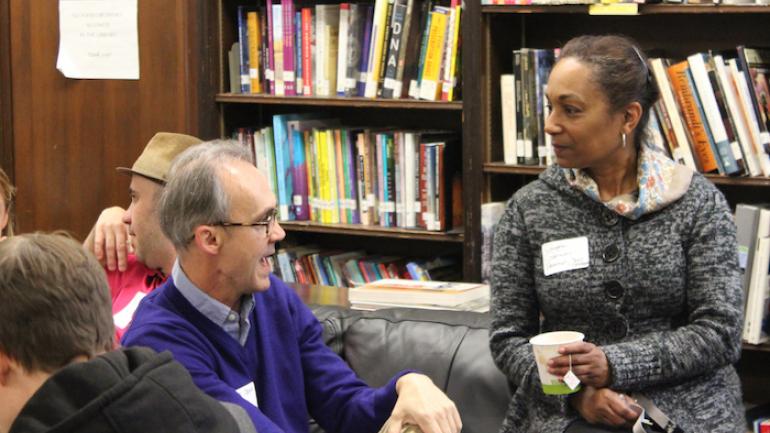
Diana Sanchez’s Spanish 2 classroom is buzzing. Students are huddled around tables, arranging and rearranging brightly colored cards. “Quick, we need more sentences!” a student says to her group, and they move on to building another sentence by rearranging the parts of speech cards. Ms. Sanchez is everywhere, praising students’ focus, pulling in students who aren’t involved with their group, and checking their work. In Ms. Sanchez’s class, what could have been a dry lecture or worksheet on using direct object pronouns is a dynamic, student-centered activity that supports kinesthetic and visual learners.
Moments like this one are not uncommon at Gateway High School, whose teachers bring creativity, innovation, and dedication to serving their students. But this is not easy work. The school’s challenge is to support and provide space for teachers to constantly reflect upon and improve their practice, to share their ideas with colleagues, and to look closely at student work. Several years ago, Gateway High began using a Professional Learning Communities model to support teachers in building their capacity to reach all of their students. Professional Learning Communities, or PLCs, refer to groups of teachers working together to look at their practice. Essentially, PLCs involve teachers identifying an issue in their practice, devising a potential solution to that issue, and then—much like scientists—using evidence of student learning to determine whether their plan worked. In this way, teachers work in a constant cycle of inquiry, examining what’s working and not working in their instruction, and making adjustments accordingly.
In Ms. Sanchez’s classroom, many students were struggling with the concept of using direct object pronouns, although Ms. Sanchez had presented the material in multiple ways. Through her PLC work, she was able to learn more about the problem, and do research on possible solutions. In the end, she decided to try the collaborative, tactile approach described above. At the end of the lesson, she asked students key questions that showed whether or not their understanding of direct object pronouns had improved. The results showed that the activity she had designed had indeed supported struggling students in mastering the concept—not to mention providing a fun and engaging learning experience.
PLCs are not the only way to support teacher growth, but they provide benefits beyond improving individual teacher’s practice that taking an education course may not. By looking at student work together, teachers build common standards for assessment and a common language for describing concepts and ideas. In collaboratively solving problems, teachers build upon each other’s strengths in creating the most effective instruction for students. As teachers work more closely together, instruction around the school becomes more similar, providing students a more coherent educational experience as they move between their seven classes. Finally, PLCs treat teaching as the profession that it is: a complex practice that requires constant honing. Gateway’s teachers are dedicated to providing their students with the best education possible; PLCs are a way to support them in doing so.
After nine years of teaching humanities, Rebecca took on a leadership role and now serves as Gateway High School's Instructional Coach. She works with new and more experienced teachers to develop their practice.